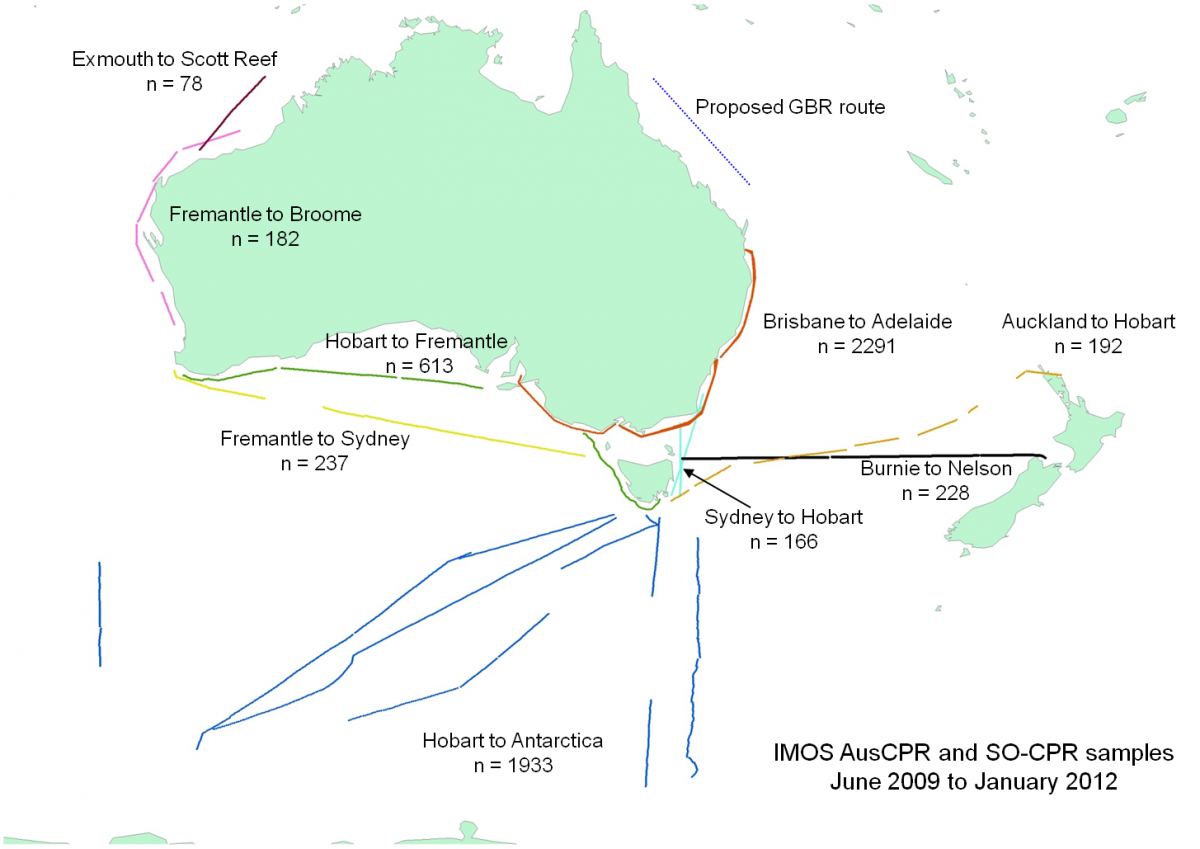February 15, 2012
Since 2008, the Australian Continuous Plankton Recorder Survey (AusCPR) has crossed 110,000 kilometres of ocean and collected a new copepod species: kick-starting the first marine plankton baseline for Australia. Its expansion offers tailor-made opportunities to assess the status of the marine food web in key locations.
AusCPR, an initiative of CSIRO and the Australian Antarctic Division (AAD), is part of the Integrated Marine Observing System (IMOS). It is run by a team of scientists – based at Brisbane and Perth laboratories of CSIRO and at the AAD near Hobart – led by Anthony Richardson of CSIRO and the University of Queensland, and Graham Hosie of AAD.
The AusCPR team maps plankton biodiversity and distribution from samples taken by continuous plankton recorders towed behind commercial and research vessels. As well as baseline mapping, the survey supports climate change monitoring, fisheries management, algal bloom detection, validation of satellite remote sensing, and ecosystem modelling.
The CPR can be deployed inexpensively to collect frequent samples across large areas, on normal routes and operating speeds, unaccompanied by research staff. In the laboratory, taxa are identified microscopically to species level: from copepods and echinoderm larvae to diatoms and dinoflagellates.
Surveys are conducted every two months from Brisbane to Adelaide, annually from Tasmania to New Zealand, and, depending on vessel availability, along the east coast of Tasmania and across the Great Australian Bight. Further routes have been established for north-western Western Australia and the Great Barrier Reef Lagoon (with the Australian Institute of Marine Science), and from Brisbane to Fiji (with researchers in the South Pacific).
‘Ships of opportunity’ engaged in the survey include the ANL cargo vessel Windarra and the Sea Lord fishing vessel Rehua, and the research vessels Southern Surveyor, Solander, Cape Ferguson, Aurora Australis, Tangaroa, Polarstern and Yuzhmorgeologya.
“The AusCPR is still expanding and we aim to sample regions around Australia that are key for industries (such as fishing), areas that might be sensitive to eutrophication or climate change (such as south-eastern Australia and the Southern Ocean), or those at risk from pollution (such as north-western Australia),” associate professor Richardson says.
“We are working with the NERP Marine Biodiversity Hub to test and develop potential indicators of climate change, fisheries, eutrophication and human health. There is some flexibility in targeting areas of interest to managers, and we would like to work collaboratively to set up new routes in areas that need long-term observations of lower trophic levels. Our ultimate aim is to provide key annual indicators for lower trophic levels around Australia.”
Marine Hub scientists have previously worked with the Integrated Marine Observing System to support detailed mapping of the marine environment. With the shift in resarch focus under NERP to supporting implementation of DSWEPaC's marine bioregional plans, Hub scientists are now working with IMOS to determine how the facilities including the AusCPR can be used to collect data on Key Ecological Features and contribute to understanding and measuring ecosystem health.
The plankton dataset is freely available at http://imos.aodn.org.au/webportal/ or contact Anthony Richardson (anthony.richardson@csiro.au)
Websites:
Australian Antarctic Division
Integrated Marine Observing System
Photo captions:
Early morning CPR retrieval, Southern Surveyor, 2010 (Photo: David McLeod)
Larval decapod (Photo: Anita Slowinski)

- Log in to post comments
